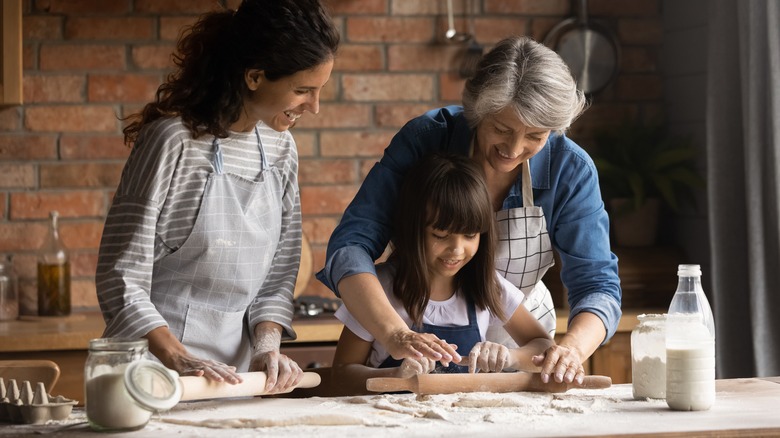What Are Foodways And How Do They Affect Your Eating?
Most food-related discourse centers on how to source, prepare, cook, and eat what ends up on our plates. Add the bits of history, mystery, and quirky foodie facts, and that's generally what we enjoy reading about. After all, it's what's relevant in our hectic everyday lives. That's why concepts such as foodways seem distant and intangible — until you take a closer look.
Foodways are, at their very core, simply the ways that food intersects with life, specifically in a certain region. That's usually the one in which we reside or the area of childhood memories in which food played a formative, connective role. Foodways form through broader cultural connections as well, such as being part of a Native American community with generational fishing lifestyles, a religious group following dietary preferences, or immigrant populations united by shared knowledge of African, Indian, or Cuban food customs. Expanded geographic regions can play a role, including Asian-influenced cuisine in the Pacific Northwest, comfort-food culture in the American South, wine-making lifestyles in the valleys of California, and Cajun and Creole cuisine in Louisiana communities.
Components of impactful foodways typically involve things such as food history, eating habits, certain ways of preparing food, and holiday customs. Foodways also incorporate regional food sourcing, including farming practices, traditional crops, climate-dictated fruit and vegetable availability, and sea-centric eating based on proximity to waterways. But mostly, foodways are about handing down those customs from generation to generation, whether knowingly or instinctively.
How foodways inform our eating
Much of who we are comes from shared meals, recipes, community eating, and special celebrations. We cement relationships with food-related activities, often through small, everyday actions, like helping grandma pat biscuits with flour, shelling peas on the back porch, flipping burgers with Uncle Bob on the deck, or pillaging backyard lemon trees for summer lemonade stands. It's also the Friday-night fish fry, tailgating, summer picnics, church potlucks, and eating king cakes at Mardi Gras. All those things slowly form our lasting personal foodways. It's likely that we'll always gravitate toward comfort foods and eating customs from formative times in our lives.
These generational food traditions illuminate the history and culture of the past, which perpetuates when handed down to those who come next. Recipes and cookbooks are primary ways this happens, especially ones that include notes or stories from the recipe creators. As foods and recipes change or veer in new directions, we see foodways evolve as well.
Some formal region-specific foodway groups explore subtle changes and document how things unfold over time — but also how they remain constant. For example, the Southern Foodway Alliance produces a podcast titled "Gravy," which follows the changing American South through the lens of foodways, exploring things like immigrant impact and the merging of new and old food traditions. The group uses narrative formats to connect patterns between history and present times and highlight the people behind the food.

